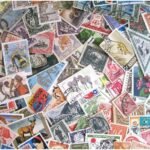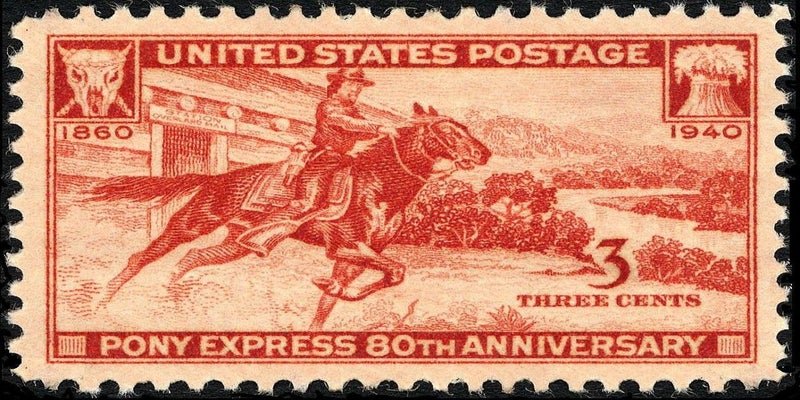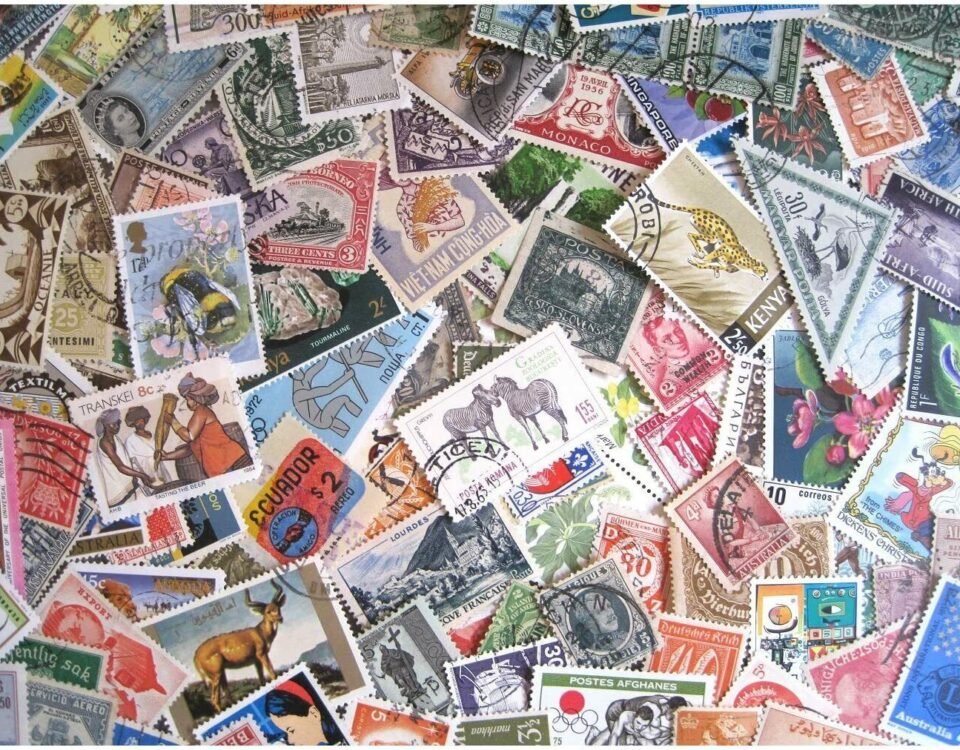
The Fascinating World of Stamp Collecting: A Comprehensive Guide
September 6, 2024
Raphael Tuck & Sons postcards from Cornwall
September 6, 2024I’m delighted to share my knowledge on this fascinating subject. Collecting USA stamps is a rewarding and educational hobby that offers a unique window into American history, culture, and art. In this comprehensive article, we’ll explore the rich world of US stamp collecting, covering everything from its origins to advanced collecting strategies.
The History of US Stamp Collecting
Stamp collecting in the United States has a long and storied history that parallels the development of the nation’s postal system. The first US postage stamps were issued in 1847, featuring portraits of Benjamin Franklin and George Washington. These early stamps quickly caught the attention of collectors, both in America and abroad. The hobby of stamp collecting, or philately, began to take shape in the 1860s, with the first stamp albums and catalogs appearing during this period. As the country expanded westward and experienced rapid industrialization, the postal system grew in importance, and with it, the variety and complexity of US stamps increased. By the late 19th century, stamp collecting had become a popular pastime among Americans of all ages and backgrounds, from schoolchildren to presidents. The formation of stamp clubs and societies further fueled interest in the hobby, leading to the establishment of the American Philatelic Society in 1886, which remains the largest organization for stamp collectors in the United States to this day. Throughout the 20th century, US stamp collecting continued to evolve, with the introduction of commemorative stamps, special issues, and thematic collecting. The hobby reached its peak popularity in the mid-20th century, with millions of Americans actively engaged in collecting and trading stamps. While the digital age has brought new challenges to traditional stamp collecting, it has also opened up new avenues for research, communication, and acquisition, ensuring that the hobby remains vibrant and accessible to enthusiasts in the 21st century.
Types of US Stamps
Understanding the various types of US stamps is crucial for any serious collector. The United States Postal Service (USPS) has issued a wide array of stamps over the years, each with its own characteristics and collecting appeal. Definitive stamps, also known as regular issues, are the workhorses of the postal system. These stamps are typically smaller in size and feature simple designs, often portraying presidents, other notable Americans, or national symbols. They are printed in large quantities and remain in circulation for extended periods, sometimes for several years. Commemorative stamps, on the other hand, are larger and more colorful, issued to honor significant people, events, or subjects of national importance. These stamps are usually available for a limited time and are highly sought after by collectors due to their artistic value and historical significance. Special stamps include categories such as airmail stamps, which were first issued in 1918 to pay for airmail service, and revenue stamps, used for tax collection purposes. Coil stamps, introduced in 1908 for use in vending machines and later in automated mail-sorting equipment, are printed in long strips and have become a specialized area of collecting. Booklet stamps, first issued in 1900, offer convenience to postal customers and present unique collecting challenges due to their format. In recent years, the USPS has also introduced self-adhesive stamps, which have largely replaced traditional gummed stamps. Each of these stamp types offers collectors different opportunities for specialization and study, from examining printing techniques and paper varieties to exploring the historical context of their issuance.
Starting Your US Stamp Collection
Embarking on a journey into US stamp collecting can be an exciting and rewarding experience. For beginners, the key is to start small and gradually expand your collection as you learn more about the hobby. A good starting point is to focus on modern US stamps, which are readily available and relatively inexpensive. Begin by saving stamps from your personal mail and asking friends and family to do the same. This not only provides you with a free source of stamps but also helps you develop an eye for different designs and issues. As you accumulate stamps, you’ll need some basic supplies to properly store and organize your collection. Invest in a good quality stamp album or stock book, which will protect your stamps and allow you to easily view and rearrange them. Stamp tongs are essential tools for handling stamps without damaging them with your fingers. A magnifying glass will help you examine stamps in detail, allowing you to spot variations and potential errors. Consider purchasing a stamp catalog, such as the Scott Specialized Catalogue of United States Stamps and Covers, which provides valuable information on stamp identification, valuation, and historical context. As you become more familiar with US stamps, you may want to start focusing on specific areas of interest. This could be a particular time period, such as 19th-century classics or modern commemoratives, or a thematic collection based on subjects depicted on stamps, such as American presidents, wildlife, or space exploration. Joining a local stamp club or online philatelic community can provide valuable guidance, opportunities to trade or purchase stamps, and a sense of camaraderie with fellow collectors. Remember that stamp collecting is a journey of discovery, and there’s always something new to learn about the rich history and artistry of US stamps.
Identifying and Grading US Stamps
Accurate identification and grading of US stamps are essential skills for any serious collector. Identification involves determining the exact issue of a stamp, which can be challenging given the many similar designs and reprints that have been produced over the years. Key factors in identification include the stamp’s design, denomination, color, perforations, watermarks, and printing method. The Scott Catalogue numbering system is the standard reference for US stamp identification, assigning unique numbers to each stamp issue. However, mastering identification often requires practice and the use of specialized literature for certain issues. Grading, on the other hand, involves assessing the condition of a stamp, which significantly affects its value. The standard grading scale for US stamps ranges from Poor to Superb, with factors such as centering, gum condition (for unused stamps), cancellation (for used stamps), color, and overall freshness taken into account. Centering is particularly important for US stamps, as many early issues were poorly centered due to primitive printing techniques. A well-centered stamp with balanced margins commands a premium. For unused stamps, the condition of the gum is crucial, with never hinged stamps (those with undisturbed original gum) generally being the most valuable. Used stamps are evaluated based on the lightness and neatness of the cancellation, with lightly canceled examples preferred. Faults such as thins, creases, tears, or missing perforations can significantly reduce a stamp’s grade and value. As you gain experience, you’ll develop a keen eye for these details, but it’s always advisable to consult reference materials or expert opinions when dealing with rare or valuable stamps. Remember that grading can be subjective, and it’s not uncommon for experts to disagree on the exact grade of a stamp, especially at the higher end of the scale.
Specialized Areas of US Stamp Collecting
As collectors deepen their engagement with US stamps, many choose to specialize in particular areas that align with their interests and offer opportunities for in-depth study. One popular area of specialization is postal history, which involves collecting and studying envelopes or postcards (known as covers) that show how stamps were used in the mail system. This can include examining postmarks, routing information, and historical context to piece together the journey of a particular piece of mail. Another fascinating area is the study of errors, freaks, and oddities (EFOs). These are stamps that have some form of production error, such as inverted centers, missing colors, or perforation mistakes. The most famous US stamp error is the Inverted Jenny, a 1918 airmail stamp mistakenly printed with the airplane upside down. Plate number collecting focuses on the marginal markings on sheets of stamps that identify the printing plate used. This area of study can reveal much about the production process and evolution of stamp designs. Some collectors specialize in a particular time period, such as classic 19th-century issues or the popular commemoratives of the mid-20th century. Others might focus on a specific type of stamp, such as airmail, revenue, or special delivery issues. Thematic collecting, where stamps are chosen based on their subject matter rather than their postal characteristics, is another popular approach. Themes might include American presidents, state flags, national parks, or any other subject depicted on US stamps. Precancels, stamps canceled before being affixed to mail, form another specialized area with a dedicated following. Some collectors delve into the technical aspects of stamp production, studying paper types, gum varieties, and printing methods. The field of postal stationery, which includes pre-stamped envelopes and postcards, offers yet another avenue for specialization. Each of these areas provides unique challenges and rewards, allowing collectors to become true experts in their chosen niche while contributing to the broader understanding of US philatelic history.
Building a Valuable US Stamp Collection
While many collectors pursue the hobby purely for enjoyment, others are interested in building a collection with significant monetary value. Creating a valuable US stamp collection requires knowledge, patience, and often a considerable financial investment. The key to building value is to focus on quality over quantity. Rare and high-grade stamps, particularly from the 19th and early 20th centuries, tend to appreciate in value over time. Classic US stamps, such as the 1847 issues or the 1869 pictorial series, are highly sought after by serious collectors and investors. Condition is paramount; stamps in superb condition, especially those that are well-centered with original gum, command significant premiums. Rarity is another crucial factor. Some US stamps were issued in very limited quantities or had most of their print run destroyed, making surviving examples extremely valuable. Famous rarities like the 1868 1¢ Z Grill or the 1867 5¢ Jefferson with Z Grill can sell for millions of dollars. However, building a valuable collection doesn’t necessarily mean focusing exclusively on the rarest stamps. Specialized collections of more common stamps can also be valuable if they demonstrate depth of study and include unusual varieties or usages. For example, a comprehensive collection of a single stamp issue, showing all known plate varieties, shades, and postal uses, can be highly prized by specialists. Covers that demonstrate important historical events or unusual postal routes can also be valuable additions to a collection. It’s important to acquire stamps from reputable sources and to obtain certificates of authenticity for high-value items. Staying informed about market trends and price movements is also crucial. Attend major stamp shows, follow auction results, and consider joining specialist societies to network with other collectors and stay abreast of developments in the field. Remember that building a truly valuable collection is a long-term endeavor that requires ongoing education and careful curation. While there’s no guarantee that stamps will appreciate in value, a well-chosen collection of quality US stamps has historically proven to be a sound long-term investment.
Preserving and Displaying Your US Stamp Collection
Proper preservation and display of your US stamp collection is crucial not only for maintaining its value but also for your own enjoyment and the education of others. The enemies of stamps are light, humidity, and improper handling, so taking steps to protect your collection from these factors is essential. Store your stamps in a cool, dry place away from direct sunlight, which can fade colors and degrade paper. Use archival-quality albums or stock books with acid-free pages to prevent chemical damage to your stamps over time. When mounting stamps, never use ordinary adhesive tape or glue, as these can cause permanent damage. Instead, use stamp hinges for used stamps or mount unused stamps in transparent, chemically inert mounts that allow the stamp to be seen without touching it. For particularly valuable stamps, consider using individual protective sleeves. When handling stamps, always use stamp tongs to avoid transferring oils and moisture from your fingers to the stamp. For displaying your collection, consider creating thematic or chronological arrangements that tell a story or highlight the evolution of US stamp design. Many collectors create exhibit pages that combine stamps with historical information, maps, or other contextual elements to create an educational display. If you plan to exhibit your collection at stamp shows, familiarize yourself with exhibition guidelines and judging criteria to create the most effective presentation. Digital preservation is also becoming increasingly important. Consider scanning your stamps at high resolution to create a digital archive. This not only provides a backup in case of loss or damage but also allows you to easily share your collection with others online. Some collectors create virtual exhibits or blogs to showcase their collections and share their knowledge with a wider audience. Remember that a well-preserved and thoughtfully displayed collection not only retains its value but also serves as a tangible connection to history and a source of pride for the collector.
The Future of US Stamp Collecting
As we look to the future, the hobby of US stamp collecting faces both challenges and opportunities. The digital age has transformed communication, leading to a decline in traditional mail volume and potentially reducing exposure to stamps among younger generations. However, this same technology has opened up new avenues for collectors to research, connect, and acquire stamps. Online marketplaces have made it easier than ever to find specific stamps and build collections, while digital tools allow for detailed study of stamp characteristics that was once only possible with high-end equipment. The United States Postal Service continues to issue new stamps, often with innovative designs and printing techniques that appeal to both collectors and the general public. Thematic issues tied to popular culture, such as comic book characters or celebrity figures, have the potential to attract new collectors to the hobby. The rise of social media and online communities has created new platforms for stamp enthusiasts to share their passion and knowledge, potentially inspiring a new generation of collectors. Environmental concerns may lead to increased interest in the history of paper-based communication, with stamps serving as tangible links to this legacy. As the world becomes increasingly digital, the tactile and historical nature of stamp collecting may appeal to those seeking a connection to the physical world and the past. The investment potential of rare US stamps continues to attract high-end collectors and investors, ensuring ongoing interest in the top end of the market. However, the future of the hobby will likely depend on its ability to adapt and remain relevant in a changing world. This may involve embracing new technologies, such as augmented reality apps that bring stamp stories to life, or finding ways to integrate stamp collecting with other areas of historical and cultural study. Ultimately, the enduring appeal of US stamps as miniature works of art and windows into American history suggests that while the nature of collecting may evolve, the fundamental fascination with these tiny pieces of paper is likely to persist well into the future.





